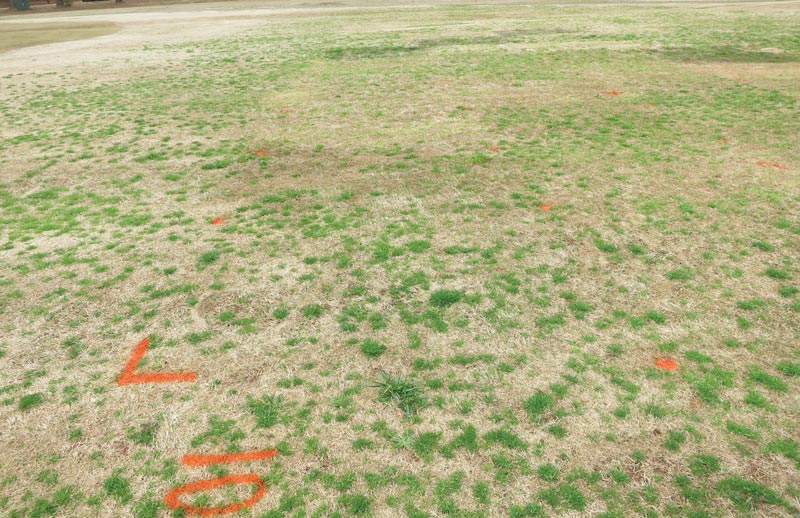
Photo by Robert Kerr
Annual bluegrass (Poa annua L.) is one of the most widespread and troublesome weeds in turfgrass systems throughout the world. In the transition zone, infestations of annual bluegrass occur when warm-season grasses go dormant in fall.
Greenhouse studies conducted at Clemson University and Auburn University evaluated the potential of “natural” nonselective post-emergence control options at two growth stages: (1) one to two tillers, and (2) mature plants possessing seedheads.
Treatments included: baking soda; Weed Pharm (Pharm Solutions); white vinegar + lemon juice + Dawn dishwashing liquid (Procter & Gamble); white vinegar + Epsom salts + Dawn dishwashing liquid; Suppress Herbicide EC (Westbridge Agricultural Products); ferrous sulfate; superphosphate; Fiesta (W. Neudorff GmbH KG); clove oil (1 liter water + 1 liter clove oil); Weed Zap (JH Biotech); EcoLogic Weed & Grass Killer (Liquid Fence Co.); Avenger Weed Killer (Avenger Organics); lemongrass oil; ethyl alcohol (moonshine); and red iron oxide.
Editor’s note: Researchers recently explored fraise mowing as another possible non-herbicidal means of combating Poa annua. Read their findings in Fraise mowing for annual bluegrass control.
At four weeks after treatment for the one- to two-tiller growth stage plants, complete control was achieved with: white vinegar + lemon juice + Dawn dishwashing liquid; clove oil; Avenger Weed Killer; and lemongrass. At 1 week after treatment, clove oil achieved approximately 90% control of treated mature plants. However, at 4 weeks after treatment, all mature plants with seedheads had fully recovered. Overall, control efficacy decreased with Poa annua maturity, and application of the baking soda was difficult to do consistently.
Incorporating successful treatments on immature plants may reduce synthetic applications and the potential for Poa herbicide resistance.
— Robert Kerr, Ph.D., Chicago District Golf Association, Lemont, Ill.; Bert McCarty, Ph.D., Clemson University, Clemson, S.C.; Scott McElroy, Ph.D., and Jim Harris, Auburn University, Auburn, Ala.; and Philip Brown, Ph.D., Virginia Tech, Blacksburg, Va.
Editor’s note: An earlier version of this summary was published in the 2019 ASA-CSSA-SSSA Meeting Abstracts, ASA-CSSA-SSSA, Madison, Wis.
Teresa Carson is GCM’s science editor.